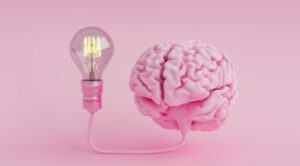Our sense of smell is more closely related to our emotions than our other senses, thanks to its direct connection to the limbic system and the amygdala. Compared to our other senses, our olfactory system is the first sense to develop in the womb and completes its development at 12 weeks. In other words, we all start learning about smells even before we are born, in the womb, in the amniotic fluid. Research has shown that what mothers consume during pregnancy affects the baby’s smell and taste preferences. In addition, it is known that the culture we belong to has a great influence on our smell and taste preferences.
Trygg Engen, who is considered to be the father of psychological research on smell, states that when we sense a smell for the first time, it does not actually mean anything to us. However, the context in which we experience this odor (place, situation, person or event) and, most importantly, the emotion that this context creates in us, become associated with the odor we experience. Depending on the odor that we experience and that becomes emotionally important, we form an idea of whether we like or dislike that odor. This theory, which explains how we acquire hedonic responses to odors, is called odor-associative learning. The most important point of the odor-associative learning theory is that how we feel when we experience an odor for the first time determines our hedonic perception of that odor in the future. In other words, the reason why we like an odor is because we had positive emotions when we experienced it for the first time, or because it is associated with something that evokes positive emotions in us. The same is true for odors we dislike; we dislike an odor if we had negative emotions when we first experienced it or if it is associated with something that evokes negative emotions in us. For example, an individual who associates the smell of rose water offered during the funeral of his/her mother with this painful and negative emotions, recalls those negative emotions every time he/she smells rose water throughout his/her life and therefore hates this smell.
To give an example from the field of neuromarketing; you entered a store and encountered a scent you have never experienced before. The products in the store, the layout of the products, the interior design of the store, the price range and the attitude of the employees made you feel valuable and satisfied. You associated these positive feelings with the unfamiliar odor in the environment through odor-associative learning. Thus, every time you visit that store and every time you sense that smell in the environment, you will feel the same positive emotions and you will start to shop at that store more often. Of course, in order for this relationship to continue, positive emotions should be evoked in the consumer continuously as much as possible. If the ambient scent is associated with negative emotions experienced in the store (waiting in long queues, indifferent behavior of employees, etc.), this will cause the consumer to avoid the store altogether and remember the negative experiences and emotions experienced in the store when the same scent is smelled. Therefore, when using scents as a neuromarketing strategy, it is necessary to consider the importance of the association of emotion and scent. If this association is made consciously, long-term customer loyalty can be achieved.
References
Neuroscientist Yağmur Başak Ören
Herz, Rachel. The Scent of Desire: Discovering Our Enigmatic Sense of Smell. Harper Perennial, 2008.




